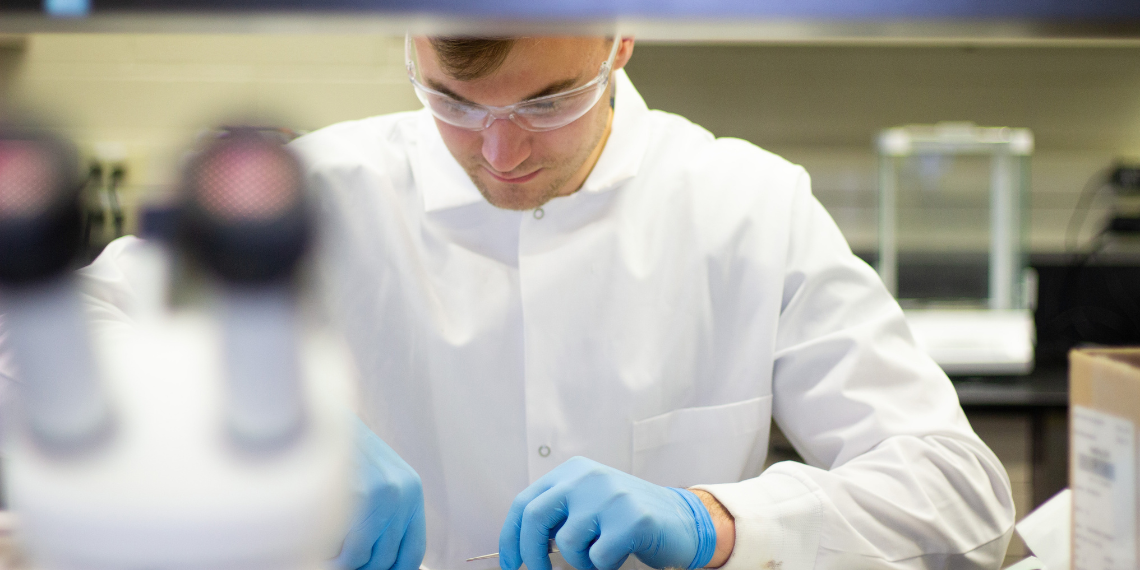Aging Like Fine Wine and Cheese: New Insights Hint at the Key to Recovery in Aging Muscles

Two of life’s greatest pleasures get better with age, wine and cheese. What if we, too, could age as well as these two classics, revered for our vintage?
Thanks to Dr. Geoffrey Power and PhD candidate Avery Hinks in the Department of Human Health and Nutritional Sciences, our muscles at least may be one step closer to “aging gracefully.”
The duo sought to assess the effect of age on recovery from muscle loss following a period of disuse – a common occurrence in older adults.
“Muscle mass is one of the biggest contributors to health, especially in older adults. Knowing what works to help maintain or restore muscle mass can help to preserve quality of life and independence while reducing the risk of disease onset,” explains Hinks.
Muscle loss is one of the many challenges our bodies face as we get older. This loss is especially severe when the muscles are not being used, which can happen frequently in older individuals due to illness and/or recovery from falls.
Muscles are composed of a series of building blocks known as sarcomeres, which create muscle fibres. The Serial Sarcomere Number (SSN) refers to the number of sarcomeres lined up in a series in these muscle fibres. The higher the SSN, the more force and power that a muscle can generate when it moves.
Hinks and Power investigated muscle recovery in young and old rats by placing a cast on the rats to immobilize one of their hind legs for two weeks. They then measured the force generated during movement, as well as changes in the SSN, over a four-week recovery period.
They found that while young rats experienced the predicted improvements in muscle structure during recovery, the older rats took longer to recover and fell short of fully regaining all muscle function.
Interestingly, they also found that SSN was the first muscle structure component to recover in both groups, suggesting that older rats are better able to recover this part of the muscle.
This study builds on other recent work by the same team, in which they investigated how resistance training impacts sarcomeres in young versus old rats. Here, they noticed that young rats increased their SSN more than old rats with a resistance training program set to a maximum intensity.
However, when they employed a different type of program for old rats at a lower intensity that mimicked training with lighter weights, there was a much bigger improvement in their SSN.
Collectively, the two studies suggest that building or rehabilitating aged muscle can benefit from lighter loads and customized strategies that specifically target the SSN.
While Hinks and Power’s research was carried out in rats, the results can be translated to adult humans.
“These are in-vivo, minimally invasive studies where the rats are kept alive throughout the training program, making it a highly applicable animal model. At the end of the study, however, we extract the muscle in order to measure SSN, which remains difficult to assess in humans,” notes Hinks.
Hinks’ study has one other important feature: while most studies in the field examine muscle strength while it is kept at a fixed position, Hinks looked at the power generated during movement, making the results more applicable to humans.
Ultimately, the researchers say the findings can be used to help cater exercise programs to older adults to maximize muscle strength and performance, with a specific focus on building SSNs.
In the end, it may well be that the secret to aging like fine wine and cheese is finding the perfect “Goldilocks” approach to muscle strengthening and rehabilitation: not too much and not too little, but just the right amount … and targeted at just the right muscle components.
Read the full studies in the journals Skeletal Muscle and Physiological Reports.
Read about other CBS Research Highlights.